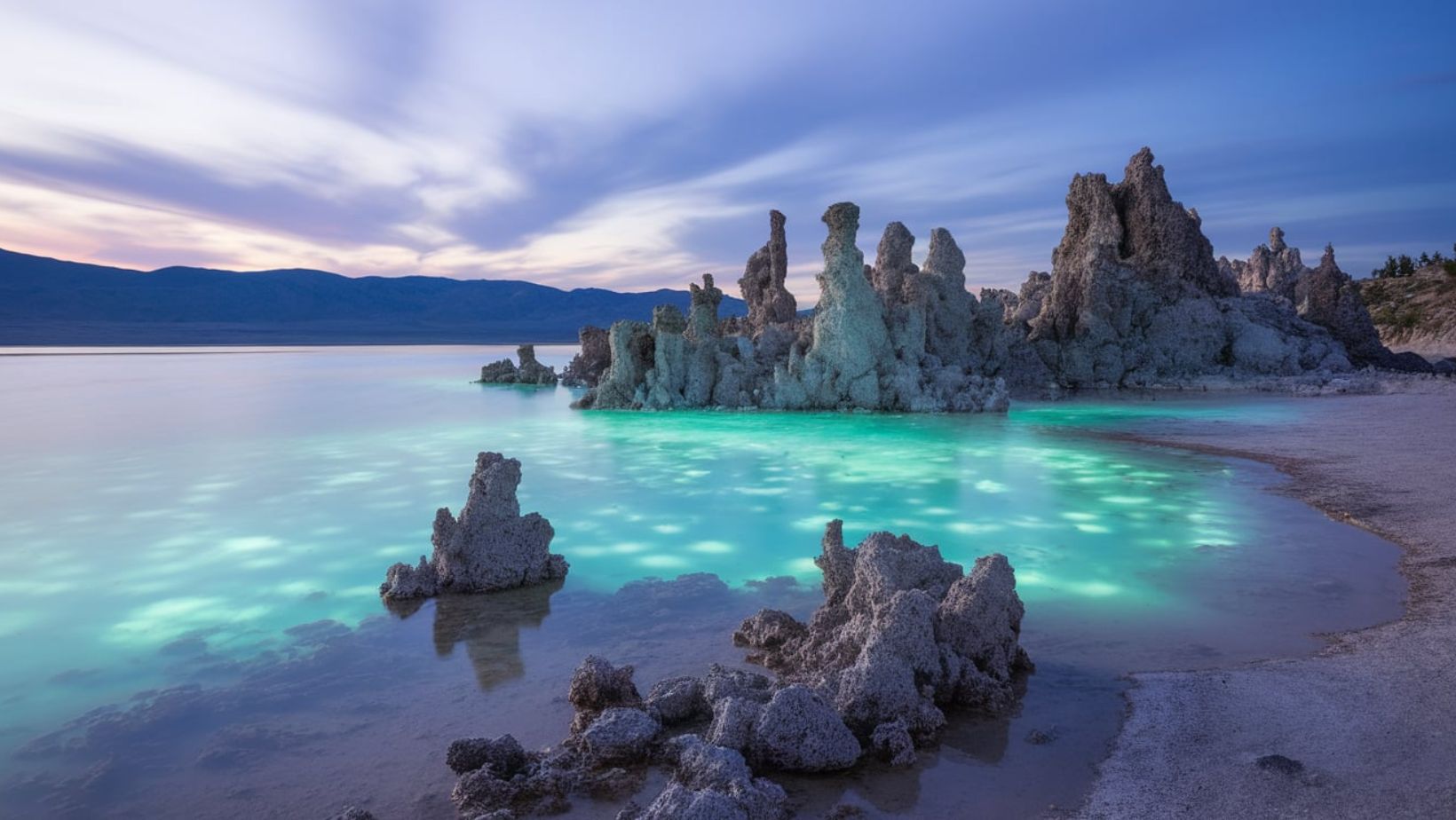What ancient forces created a lake so salty it feels like soap, yet sustains trillions of living creatures? How do mysterious limestone towers continue to grow from its alkaline waters like alien monuments? Why do scientists compare this million-year-old body of water to potential lakes on Mars? At Mono Lake, where normal rules of freshwater lakes cease to apply, one of North America’s oldest and strangest natural wonders continues to challenge our understanding of what’s possible on Earth.
Mono Lake Stands as Earths Most Unique Chemical Wonder
Spanning 70 square miles of California’s Eastern Sierra, Mono Lake represents nature’s perfect laboratory for extreme biochemistry. Like Earth’s most impressive geological formations, its unique conditions create extraordinary features. With water 2.5 times saltier than the ocean and highly alkaline pH levels, this ancient lake supports an ecosystem found nowhere else on Earth.
Tufa Towers Defy Conventional Geology
Rising like ancient skyscrapers from the lake’s surface, Mono Lake’s tufa towers showcase nature’s architectural prowess. Similar to how other natural limestone formations capture imagination, these calcium carbonate structures form when underwater springs rich in calcium meet the lake’s carbonate-rich waters. Some towers reach heights of over 30 feet, creating an otherworldly landscape that photographers and scientists find equally compelling.
Trillion Strong Ecosystem Thrives in Extreme Conditions
Despite its harsh chemistry, Mono Lake supports an incredibly productive ecosystem. Like isolated evolutionary laboratories, the lake has developed unique life forms adapted to its extreme conditions. Trillions of brine shrimp and alkali flies thrive in these waters, providing essential food for millions of migratory birds.
Ancient Waters Tell Earth’s Climate Story
As one of North America’s oldest lakes, Mono Lake serves as a crucial record of climate change. Its shorelines mark distinct periods of Earth’s climate history, while sediment cores from the lake bottom provide detailed environmental records spanning hundreds of thousands of years. Scientists study these records to understand past climate patterns and predict future changes.
Sunrise and Sunset Transform Alien Landscape
During golden hours, Mono Lake undergoes spectacular transformations. The interplay of light on the alkaline waters and tufa towers creates surreal scenes that photographers compare to alien landscapes. The lake’s mirror-like surface reflects sky colors while highlighting the textured surfaces of its limestone sculptures.
Conservation Success Story Continues
Mono Lake’s recent history demonstrates the power of environmental activism. After years of water diversion threatened the lake’s existence, successful conservation efforts helped restore and protect this unique ecosystem. Water levels are now managed to preserve both the lake’s ecological functions and its extraordinary geological features.
Scientific Research Reveals Mars Connection
NASA scientists study Mono Lake’s unique chemistry and biology to understand potential life forms on Mars. The lake’s extreme conditions and mineral formations resemble environments that might exist on other planets. Research here helps develop methods for detecting and studying life in extreme extraterrestrial environments.
Native American Heritage Preserves Ancient Knowledge
The Kutzadika’a Paiute people have lived around Mono Lake for thousands of years, developing sophisticated understanding of its unique ecosystem. Their traditional knowledge continues to inform modern conservation efforts and helps visitors appreciate the lake’s cultural significance.
Visitor Access Balances Experience with Protection
Carefully planned infrastructure allows visitors to experience Mono Lake’s wonders while protecting its fragile features. Boardwalks provide close-up views of tufa formations, while designated viewing areas offer perfect sunrise and sunset observation points. Educational programs help visitors understand the lake’s ecological importance and unusual chemistry.
Wildlife Sanctuary Supports Global Migration
Mono Lake serves as a crucial stopover for millions of migratory birds. Its productive ecosystem provides essential nutrition for birds traveling between summer and winter habitats. The lake’s isolation and protected status make it one of North America’s most important wildlife sanctuaries.
Future Challenges Require Continued Vigilance
Climate change and regional water demands pose ongoing challenges for Mono Lake’s preservation. Scientists monitor water chemistry, ecosystem health, and wildlife populations while developing strategies to protect this unique environment. These efforts ensure that future generations can experience and study one of Earth’s most extraordinary lakes.
